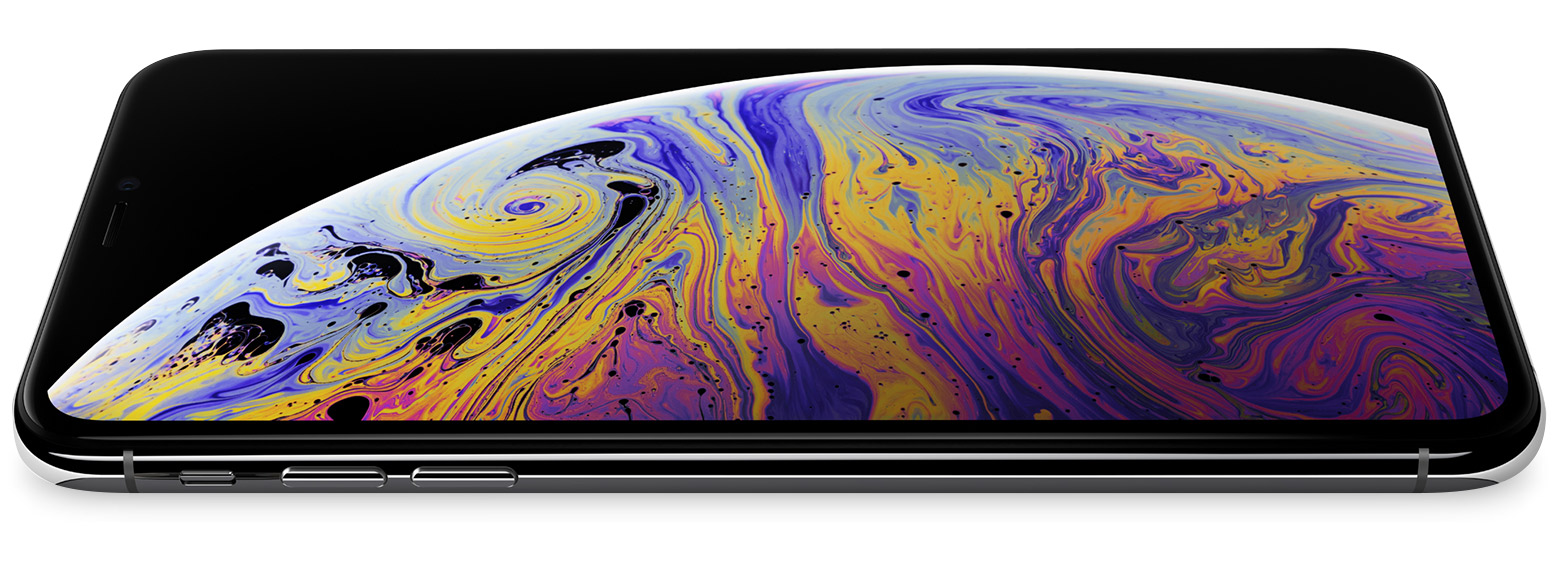About the Super Retina display and Super Retina XDR display on your iPhone
Learn how to get the most out of the Super Retina display or Super Retina XDR display on your iPhone.

The Super Retina display in iPhone X, iPhone XS, and iPhone XS Max and the Super Retina XDR display in iPhone 11 Pro models and later, excluding iPhone SE (2nd and 3rd generation), were engineered by Apple to meet our incredibly high standards. We believe these are the best OLED displays that have ever shipped in a smartphone while offering incredible color accuracy. The Super Retina and Super Retina XDR displays have incredible contrast, high brightness, and a cinema standard wide color gamut. Together with the best system color management, colors are precisely calibrated to deliver an optimal viewing experience.
High Dynamic Range
Super Retina and Super Retina XDR also feature High Dynamic Range (HDR), which delivers a broad range of dark and light areas in photos and video. This allows you to see deep true blacks and pure bright whites while retaining dramatic nuances in between. Photos look more vivid, and everything you watch in Dolby Vision, HDR10, or HLG is more stunning than ever.
OLED technology
The Super Retina and Super Retina XDR displays use organic light-emitting diode (OLED) technology. Super Retina and Super Retina XDR includes further advancements over traditional OLED displays to enable an incredible viewing experience, for the first time rising to the standards of iPhone.
OLED technology delivers an incredibly high contrast ratio and high resolution. And with no backlight, OLED emits light through each pixel, allowing for a thinner display. The Super Retina and Super Retina XDR displays overcome challenges with traditional OLED displays with their high brightness, wide color support, and incredible color accuracy.
If you look at an OLED display off-angle, you might notice slight shifts in color and hue. At reduced display brightness levels against black backgrounds, you might notice a slight blur or color change while scrolling. These are characteristics of OLED and are normal behavior. With extended long-term use, OLED displays can also show slight visual changes. This is also expected behavior and can include “image persistence” or “burn-in,” where the display shows a faint remnant of an image even after a new image appears on the screen. Image persistence is temporary and disappears after a few minutes of normal use. Burn-in can occur in more extreme cases such as when the same high-contrast image is continuously displayed at high brightness for prolonged periods of time.
We’ve engineered the Super Retina and Super Retina XDR displays to be the best in the industry in reducing the effects of OLED burn-in. This includes special algorithms that monitor the usage of individual pixels to produce display calibration data. Your iPhone uses that data to automatically adjust the brightness levels for each pixel as needed to reduce visual effects from burn-in and to maintain a consistent viewing experience. The auto-brightness function can further reduce the effects of burn-in and image persistence.
In addition, all displays, including OLEDs and LCDs, might be susceptible to reduced brightness levels as the display ages over time. This can occur on any consumer-electronics product.
Get the most out of the Super Retina and Super Retina XDR displays
With the latest version of iOS, your iPhone is specially designed to minimize the effects of long-term use and extend the viewing life of the Super Retina and Super Retina XDR displays. Here are some additional things you can do to get the most out of your Super Retina or Super Retina XDR display:
Update your iPhone to the latest version of iOS. When a new update is available, you'll see a prompt to update. You can also check for updates in Settings > General > Software Update.
Use auto-brightness to automatically adjust the brightness of your display based on the ambient light in your location. This setting is on by default. To check this setting, go to Settings > Accessibility > Display & Text Size, then scroll down and turn on Auto-Brightness.
Set your iPhone to turn off the display when you aren’t using it. Choosing a shorter time is recommended. To adjust this setting, go to Settings > Display & Brightness > Auto Lock.
Avoid displaying static images at maximum brightness for long periods of time. If you have an app that keeps your display on when you aren’t actively using your iPhone, you can temporarily reduce the brightness level using Control Center.
This document will be updated as more information becomes available.
Information about products not manufactured by Apple, or independent websites not controlled or tested by Apple, is provided without recommendation or endorsement. Apple assumes no responsibility with regard to the selection, performance, or use of third-party websites or products. Apple makes no representations regarding third-party website accuracy or reliability. Contact the vendor for additional information.
